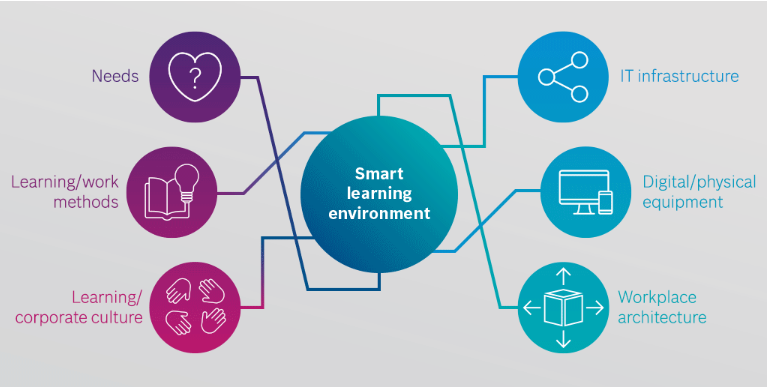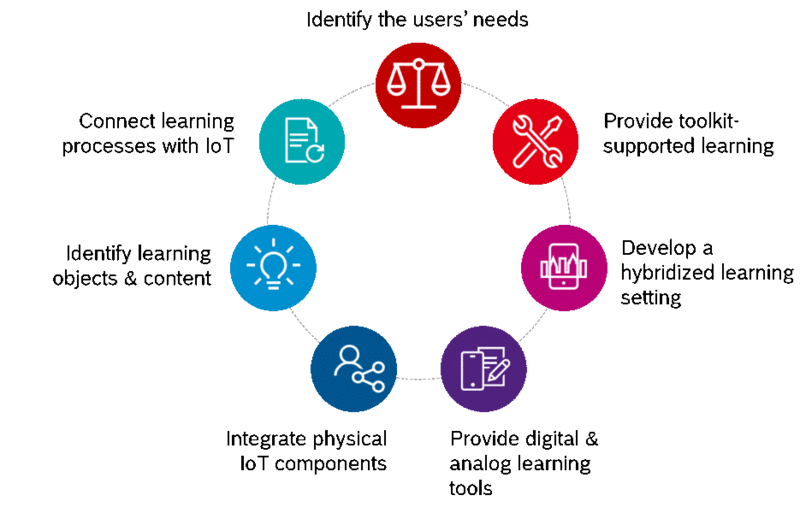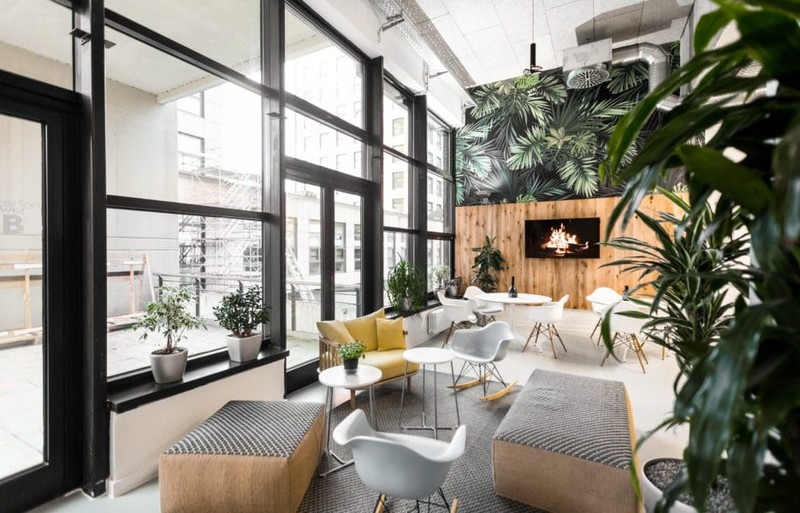e-Learning Ecologies MOOC’s Updates
Smart learning environments - IoT in education
Ubiquitous learning (u-learning) enables to provide appropriate information to individual students in the right place and at the right time. However, researchers have indicated that, to support students to learn in real-world contexts in smart ways, more factors need to be taken into account when designing and developing learning systems. Smart learning environments may provide an appropriate solution.
What are smart learning environments?
In industry, there are some companies focusing on smart learning environments as part of their Internet of Things (IoT) strategy. For instance, BOSCH defines smart learning environments as IoT-based learning solutions, which are seamlessly integrated into the working and learning environment. Smart learning environments are therefore physical environments enriched with context-aware digital devices to improve and accelerate learning.
What are the benefits of smart learning environments?
Smart learning environments can meet the growing demand for self-directed, informal learning at learners’ workplace. This innovative approach to learning can enable employees to increase their potential and to enhance their own knowledge management.
What technology is required?
Making learning systems smart combines both the fields of computer science and education. According to BOSCH experts, smart learning environments require Artificial Intelligence (AI) and the IoT, which is defined as a bundle of technologies that connects different types of IT ranging from RFID to data analytics and virtual reality.
What are the challenges?
On the technical side, the biggest challenge in this regard is data security and data privacy. It is crucial that learners always have control over their personal data. Additionally, providers of smart learning environment face challenges regarding the complexity of such IoT systems and have to be careful that they do not become increasingly dependent on technology.
On the organizational side, (especially traditional) organizations require a cultural mindset shift from models that push knowledge to knowledge-pull models. In organizations, both learners (e.g. workers) and learning enablers (e.g. HR development) all have to re-learn and explore new ways of learning and shape a new learning culture within the organization.
When integrating the IoT in learning processes and smart learning environments, Bosch suggests to take six main areas to take into account:
Start small – think big
Smart learning environments may sound superficial and in distant future. However, some companies have already started to collect practical experiences. An explorative approach allows to test and evaluate new technologies without the financial risk of substantial up-front investments.
BOSCH suggests 7 success factors to successfully implement smart learning environments:
My personal story
In December 2019, I visited The Bosch IoT Campus in Berlin. This modern workplace has a variety of work areas and an open-plan, light-filled architecture. Although I am based in another Bosch location, I was able to choose (via mobile app) which environment I wanted to work in. For example, I chose the caravan for a meeting to develop new ideas together with colleagues. I had similar experiences when I visited the connectory in Chicago and also IT Campus in Stuttgart. At the campus, I can use my mobile phone to check and reserve available workplaces, meeting rooms, relaxing rooms (to take a nap ;-)) and see which events, trainings and lunch & learn sessions I can join today.
All in all, I am thrilled of those creative, touch-based, and social methods of learning and working that a rather traditional manufacturer like Bosch is offering – and I am curious about future learning environments.
References:
Hwang, G. (2014), Definition, framework and research issues of smart learning environments - a context-aware ubiquitous learning perspective, https://slejournal.springeropen.com/articles/10.1186/s40561-014-0004-5
Spector, J (2016), Smart Learning Environments: Concepts and Issues, https://www.researchgate.net/publication/301612985_Smart_Learning_Environments_Concepts_and_Issues
Freigang, S., Bosch.IO, IoT in education by designing smart learning environments, https://blog.bosch-si.com/future-of-work/iot-in-education-by-designing-smart-learning-environments/
Freigang, S., Bosch.IO, Our journey from modern workplace to smart learning environments, https://blog.bosch-si.com/future-of-work/our-journey-from-modern-workplace-to-smart-learning-environments/
Further materials:
Website – Bosch IoT Campus in Berlin: https://bosch.io/about-us/locations/berlin/
Example prototype for smart recommendation systems: https://youtu.be/5gy6V1M2R9M






Interesting update @Fabienne Fleischmann !
Smart learning environments seem to create an ideal atmosphere for the application of u-learning. The biggest challenge for its application may be the cultural mindset shift between workers and HR. It will demand educational strategies that promote reflexive pedagogy and possibly what we are learning in this e-learning ecologies MOOC will be useful for this shift.